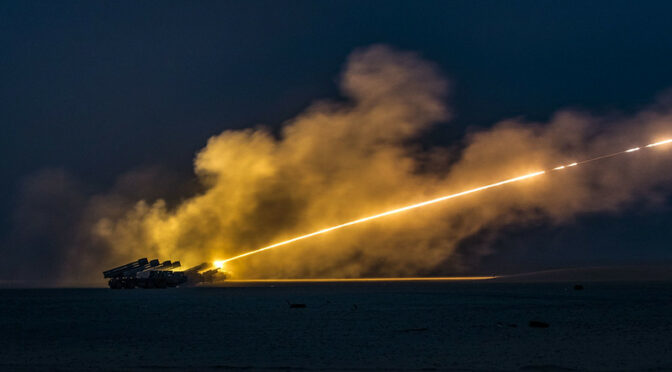Article published in The Daily Telegraph, 16 February 2023. © Richard Kemp
Another day, and yet more worrying news from the frontline: Ukrainian troops are firing as many as 6,000 artillery shells a day to try and beat back Russia’s new offensive. It is an expenditure rate the West is struggling to feed; so high that Defence Secretary Ben Wallace has said that Ukraine’s forces could run out of ammunition unless they use it more sparingly.
His comments remind us of an essential truth: that brute force and, critically, the ability to sustain and replenish it over an extended period, is historically what wins wars in the end.
This rule counters the orthodox interpretation of this war so far. For many, Ukraine’s early success against apparently overwhelming Russian force suggested that high-tech weaponry – and nimbleness in strategy and deployment – were enough to defeat larger forces. It also vindicated the British military consensus that we should invest in cyber, computers, unmanned vehicles, and ‘ranger’ units to train, advise and mentor allies rather than in combat infantrymen, heavy armour and other conventional weapons – sometimes disparagingly referred to as ‘legacy’ capabilities.
But that is not what the war has shown us at all. Indeed, it would be disastrous if Vladimir Putin’s failures fooled the West into thinking that hard military power is a thing of the past. His forces have struggled not because they have relied on the massive use of tanks, armoured vehicles, and troops against a nimbler opponent, but because those capabilities have not been deployed effectively.
And on the Ukrainian side, yes, cyber and drones have played a role, with electronic intelligence and airborne surveillance also pivotal. But the true game-changers have been the heavy, punchier weapons provided by the US, such as HIMARS, which have been particularly devastating against Russian logistics bases, starving front line forces of vital combat supplies. Likewise, tanks and armoured infantry fighting vehicles have shown their persistent combat utility, which is why they are at the top of Zelensky’s list for military aid.
But as in all major 20th century conflicts, it is artillery that has been the greatest life-taker on both sides in Ukraine. Not for nothing is it nicknamed the ‘King of Battle’.
All this underlines the foolishness of the current British defence strategy. It is not enough to invest in small amounts of high-tech weaponry which, at the expense of conventional combat power, was the emphasis of our recent defence review. Britain needs to focus also on the heavy metal of hard ground combat forces. It remains shocking that heavy machines are afforded such low priority that we are down to fewer than 200 tanks – to be reduced to 148 – and Warrior, our only armoured infantry fighting vehicle, is being phased out without obvious replacement.
Equally shocking is the lack of investment in artillery. Some have suggested that, faced with a conflict like Ukraine, the British Army would run out of ammunition in a matter of days. That is because, under budgetary pressures, we do not have anything like adequate stocks of ammunition.
Thankfully, Wallace – a true military man – seems to recognise this, and is reportedly asking for a £11 billion increase in the defence budget. But we need more than just money; we need a shift in mindset. It was embarrassing enough that, at the end of the Cold War, we had to cannibalise three armoured divisions to send just one small division to fight in the 1990-1991 Gulf War. But what is worse is that we couldn’t do anything like that today.
In Afghanistan, with equipment shortages everywhere, no attempt was made to put the defence industry on a war footing, and armoured vehicles were manufactured with all the urgency of a family saloon, at the cost of British soldiers’ lives. We see this same failure to bite the bullet in the debate on replenishing Ukrainian ammunition stocks, which should have been dealt with many months ago when it became obvious this was going to be a long war.
Every day, Russian guns are blasting out three times as many shells as Ukraine’s, but Moscow’s defence industry is on a war footing, with production ramping up and no sign of ammunition shortages. The current arms race between Russia and the West, which we are losing, should serve as a dire warning over the state of our own national defences.
Image: US Army

